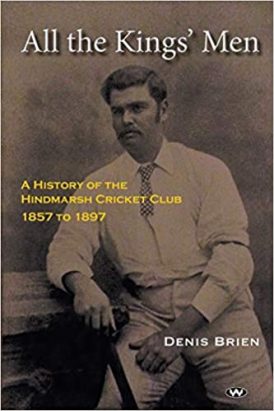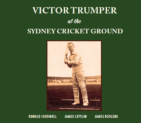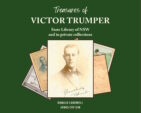All The Kings’ Men
Archie Mac |Published: 2018
Pages: 348
Author: Brien, Denis
Publisher: Wakefield Press
Rating: 4 stars

The publication under review won the prestigious Jack Pollard Trophy for the Australian cricket book of the year in 2018, and a worthy winner it was too.
The book is a history of the Hindmarsh cricket club which is one of the oldest clubs in Adelaide. Hindmarsh commenced in 1857 and had a name change in 1897, with the adoption of Electorate Cricket, to West Torrens. Author Denis Brien ends his story just after the commencement of electorate Cricket.
Club histories are mostly pretty bland affairs, with the majority of players unknown to those outside the club. Most cricket clubs, in the major cities, have a scattering of first class players and perhaps a handful of Test players. Hindmarsh for instance can boast just one Test representative in ‘Affie’ Jarvis, whose picture adorns the cover.
What, Brien has done to elevate All the Kings’ Men well above even the best written and researched club history is to set the players in their contemporary settings.
This must have taken a power of research and makes for a fascinating read. We learn that the early matches in Adelaide were organised by the aristocracy and played on a Monday. This was to limit the proletariat classes’ ability to attend. Brien continues to mention that the rich still run the game in South Australia to the detriment of cricket.
Hindmarsh was very much a club of the hoi polloi, being made up mostly from the working classes of the area. It seems that this caused no end of problems for the Hindmarsh cricket club. Often players would show up late for matches after being forced to work back at their employment. With no unions or welfare system, the employer had all the power.
Brien provided information on how the game was played during the period covered; the preparation of wickets and the equipment used by the players. One position, the longstop, seems to have been a tough one on the rough and ready pitches of the times with the fieldsman strapping newspapers to his shins.
Some of the playing conditions seem quite absurd. For instance games were played to a finish and were scheduled over two Saturdays. If not completed they just continued. However due to the vagaries of player and ground availability, games could often stretch over many weeks and on occasions months. With no declaration option, especially in the early days, clubs would sometimes simply forfeit rather than come back midweek, or for a few overs sometime in the future.
The other interesting fact was that two games were played on Adelaide Oval simultaneously, the Oval apparently being large enough to accommodate this. So you may have a team waiting for a match to finish, for example a carried over match may only need two wickets to be claimed. That team would then commence a new match against a different opposition who just sat around and waited. Ah, the relaxed days of yore.
The book is set in two parts. The first half deals with the history of the Hindmarsh club and the second contains short bios on all the major contributors to the club, the most detailed being on Jarvis, who played 11 Tests as a wicket keeper for Australia over a ten year period. Jarvis, much like the scenario between Stuart McGill and Shane Warne, was unlucky to be a contemporary of that ‘Prince of Wicket Keepers’, Jack Blackham, otherwise he would surely have represented his country many more times.
There is a lot more I could write in the review of this book, as it is so detailed and informative, but I hope this short review will whet the appetite and people will track down a copy. It is well worth the effort.






Leave a comment